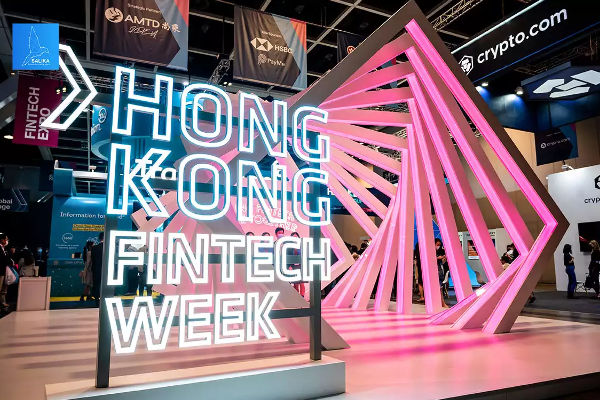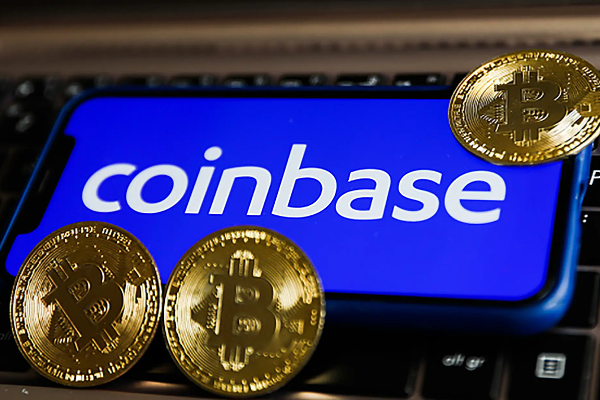From DeFi to Bitcoin, Exploring Crypto Asset Valuation Models

Crypto has become one of the most dynamic and promising sectors in the field of financial technology. With the entry of many institutional funds, how to reasonably value Crypto projects has become a key issue. Traditional financial assets have a mature valuation system, such as the discounted cash flow model (DCF Model), the price-earnings ratio valuation method (P/E), etc.
There are many types of Crypto projects, including public chains, CEX platform coins, DeFi projects, meme coins, etc., each of which has different characteristics, economic models and token functions. It is necessary to explore valuation models that are suitable for each track.
1. Public chain-Metcalfe's law
Law analysis
The core content of Metcalfe's Law: the network value is proportional to the square of the number of nodes.
V = K*N² (where V is the network value, N is the number of valid nodes, and K is a constant)
Metcalfe's law is widely recognized in the value prediction of Internet companies. For example, in the paper "An Independent Study on the Value of Facebook and Tencent, China's Largest Social Networking Company (Zhang et al., 2015)", the value and number of users of these companies showed the characteristics of Metcalfe's law over a 10-year statistical period.
ETH Example
Metcalfe's law is also applicable to the valuation of blockchain public chain projects. Western scholars have found that the market value of Ethereum is in a logarithmic linear relationship with daily active users, which is basically consistent with the formula of Metcalfe's law. However, the market value of the Ethereum network is proportional to the user's N^(1.43), and the constant K is 3000. The calculation formula is as follows:
V = 3000 * N^1.43
According to statistics, there is indeed some correlation between the Metcalfe's law valuation method and the ETH market value trend:
Limitation analysis
Metcalfe's law has limitations when applied to emerging public chains. In the early stage of public chain development, the user base is relatively small, and it is not suitable to be valued based on Metcalfe's law, such as the early Solana, Tron, etc.
In addition, Metcalfe's law cannot reflect the impact of pledge rate on token price, the long-term impact of Gas fee burn under the EIP1559 mechanism, and the public chain ecosystem may be based on the Security Ratio to TVS (Total Value Secured) game.
2. CEX platform currency - profit repurchase & destruction model
Model analysis
Centralized exchange platform currency is similar to equity token, which is related to exchange income (transaction fee income, listing fee, other financial business, etc.), public chain ecological development, and exchange market share. Platform currency generally has a repurchase and destruction mechanism, and may also have the Gas Fee Burn mechanism in the public chain.
The valuation of platform currency needs to consider the overall income of the platform, and needs to discount future cash flows to estimate the intrinsic value of the platform currency. It also needs to consider the destruction mechanism of the platform currency and measure its scarcity changes. Therefore, the rise and fall of platform coins are generally related to the transaction volume growth rate of the trading platform and the reduction rate of the platform coin supply. The simplified profit repurchase & destruction model valuation method is as follows:
Platform coin value growth rate = K*transaction volume growth rate*supply destruction rate (where K is a constant)
BNB example
BNB is the most classic exchange platform coin. Since its birth in 2017, it has won wide acclaim from investors. BNB's empowerment method has gone through two stages:
Phase 1: Profit repurchase-from 2017 to 2020, Binance used 20% of its profits to repurchase and destroy BNB every quarter;
Phase 2: Automatic destruction + BEP95-the Auto-Burn mechanism will be implemented in 2021, no longer referring to Binance's profits, but based on the price of BNB and the number of BNB Chain quarterly blocks, the destruction amount is calculated according to the formula; in addition, there is also a BEP95 real-time destruction mechanism (similar to Ethereum's EIP1559). 10% of each block reward will be destroyed. So far, a total of 2,599,141 BNBs have been destroyed through the BEP95 mechanism.
The Auto-Burn mechanism calculates the destruction amount according to the following formula:
Where N is the quarterly block output of BNB Chain, P is the quarterly average price of BNB, and K is a constant (the initial value is 1000, adjusted by BEP).
Assuming that the Binance transaction volume growth rate in 2024 is 40%, the BNB supply destruction rate in 2024 is 3.5%, and the constant K is 10, then:
BNB value growth rate = 10*40%*3.5% = 14%
That is to say, assuming that according to this data, BNB should increase by 14% in 2024 compared to 2023.
Since 2017, a total of more than 59,529,000 BNBs have been destroyed, with an average of 1.12% of the remaining BNB destroyed each quarter.
Limitation Analysis
When using this valuation method in actual operations, it is necessary to pay close attention to changes in the market share of the exchange. For example, if the market share of an exchange continues to decline, even if its current profit performance is acceptable, future profit expectations may be affected, thereby reducing the valuation of the platform currency.
Changes in regulatory policies also have a great impact on the valuation of CEX platform currencies, and policy uncertainty may lead to changes in market expectations for platform currencies.
3. DeFi Project-Token Cash Flow Discount Valuation Method
The core logic of the token cash flow discount valuation method (Discounted Cash Flow, DCF) used by DeFi projects is to predict the cash flow that the token can generate in the future and discount it to the current value at a certain discount rate.
Among them, FCFt is the free cash flow (Free Cash Flow) in the tth year, r is the discount rate, n is the forecast period, and TV is the Terminal Value.
This valuation method determines the current value of the token by anticipating the future earnings of the DeFi protocol.
Take RAY as an example
Raydium's revenue in 2024 is 98.9m. Assuming an annual growth rate of 10%, a discount rate of 15%, a forecast period of 5 years, a perpetual growth rate of 3%, and an FCF conversion rate of 90%.
Cash flow in the next five years:
Total discounted FCF in the next five years: 390.3m
Terminal Value discounted to 611.6m
DCF total valuation = TV + FCF = 611.6m + 390.3m = 1.002B
RAY's current market value is 1.16B, which is similar overall. Of course, this valuation is based on an annual growth rate of 10% in the next five years. In fact, Raydium is likely to have negative growth in a bear market, and the growth rate may be more than 10% in a bull market.
Limitation Analysis
The valuation of DeFi protocols has several major challenges: First, governance tokens generally do not capture the revenue value of the protocol. In order to avoid the risk of being judged as securities by the SEC, dividends cannot be distributed directly. Although there are ways to avoid this (staking rewards, repurchase and destruction, etc.), the DeFi protocol lacks the motivation to feed profits back to the token; second, it is extremely difficult to predict future cash flows, because the market changes rapidly between bull and bear markets, the cash flow of DeFi protocols fluctuates greatly, and the behavior of competitors and users is changeable; third, the determination of the discount rate is complex, and it is necessary to comprehensively consider multiple factors such as market risk and project risk. The choice of different discount rates will have a huge impact on the valuation results; fourth, some DeFi projects have adopted a profit repurchase and destruction mechanism. The implementation of such a mechanism will affect the circulation and value of tokens. DeFi tokens with such a mechanism may not be suitable for the use of cash flow discount valuation method.
4. Bitcoin-Comprehensive consideration of multiple valuation methods
Mining cost valuation method
According to statistics, in the past five years, the proportion of time when the price of Bitcoin was lower than the mining cost of mainstream mining machines was only about 10%, which fully demonstrates the important role of mining costs in supporting Bitcoin prices.
Therefore, the cost of Bitcoin mining can be regarded as the bottom line of Bitcoin price. There are only a few times when the price of Bitcoin is lower than the mining cost of mainstream mining machines. From the past situation, these times are excellent investment opportunities.
Gold Substitute Model
Bitcoin is often regarded as "digital gold" and can replace some of the "value storage" functions of gold. At present, the market value of Bitcoin accounts for 7.3% of the market value of gold. If this ratio is increased to 10%, 15%, 33%, and 100% respectively, the unit price of Bitcoin will reach US$92,523, US$138,784, US$305,325, and US$925,226 according to the corresponding conversion. This model is based on the analogy of the value storage properties of the two, and provides a macro reference perspective for Bitcoin valuation.
However, there are still many differences between Bitcoin and gold in terms of physical properties, market cognition, and application scenarios. Gold has become a globally recognized safe-haven asset after thousands of years, with a wide range of industrial uses and physical support; while Bitcoin is a virtual asset based on blockchain technology, and its value is more derived from market consensus and technological innovation. Therefore, when using this model, it is necessary to fully consider the impact of these differences on the actual value of Bitcoin.
Summary
This article aims to advocate the search for valuation models for Crypto projects to promote the steady development of valuable projects in the industry and attract more institutional investors to allocate crypto assets.
Especially when the market is bearish, we must use the most stringent standards and the simplest logic to find projects with long-term value. Through a reasonable valuation model, just like Google and Apple, which seized the "bubble burst" in 2000, we can dig out "Google and Apple" in the Crypto field in the bear market.









